
Public outreach is an important aspect of the work of the Study Center within the community. We interact with a broad group of people by providing tours for school groups, signs at archaeological sites, English translations of signs for local museums, and public lectures.
Student Tours
Each year several local elementary schools arrange visits to the Study Center. A tour begins with a discussion of the excavation process and the role of an archaeologist, illustrated with tools, notebooks, a Munsell color chart, and photographs. It continues by following the path though the building that an artifact would typically take, from cleaning to conservation, drawing, and photography. After the building tour, the children participate in several activities relating to the work of the Study Center. The activities include sorting small artifacts and ecofacts out of a simulated heavy residue sample from the water sieve, drawing or coloring artifact illustrations, modeling clay replicas of small pots or figurines, and joining sherds and taping together a broken modern ceramic vessel. We also have assisted several elementary school groups with a visit to the archaeological site of Gournia, a Minoan town located west of the Study Center. In addition to elementary school students, several groups from universities and other programs, including the American School of Classical Studies at Athens and College Year at Athens, visit each year.
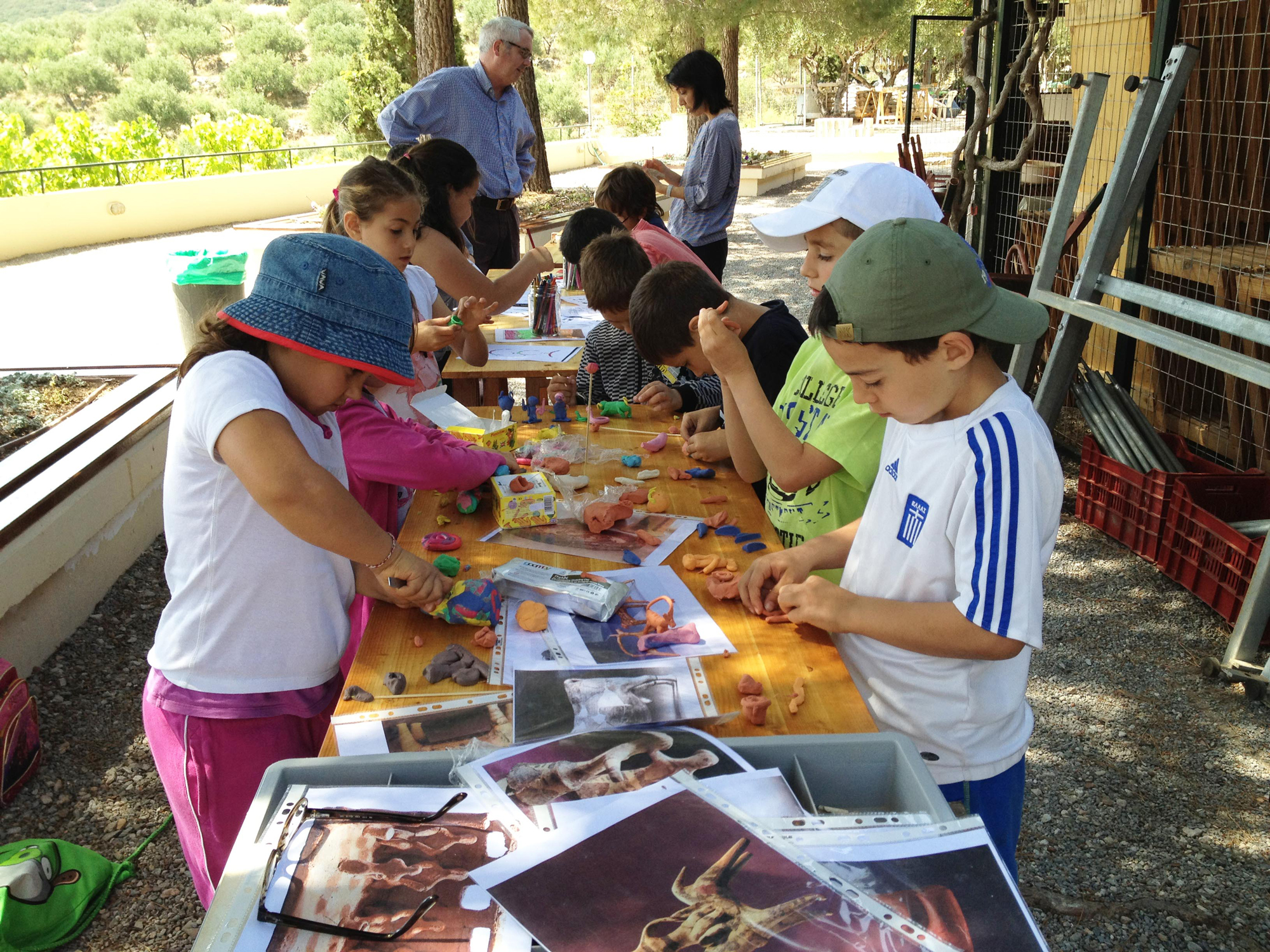
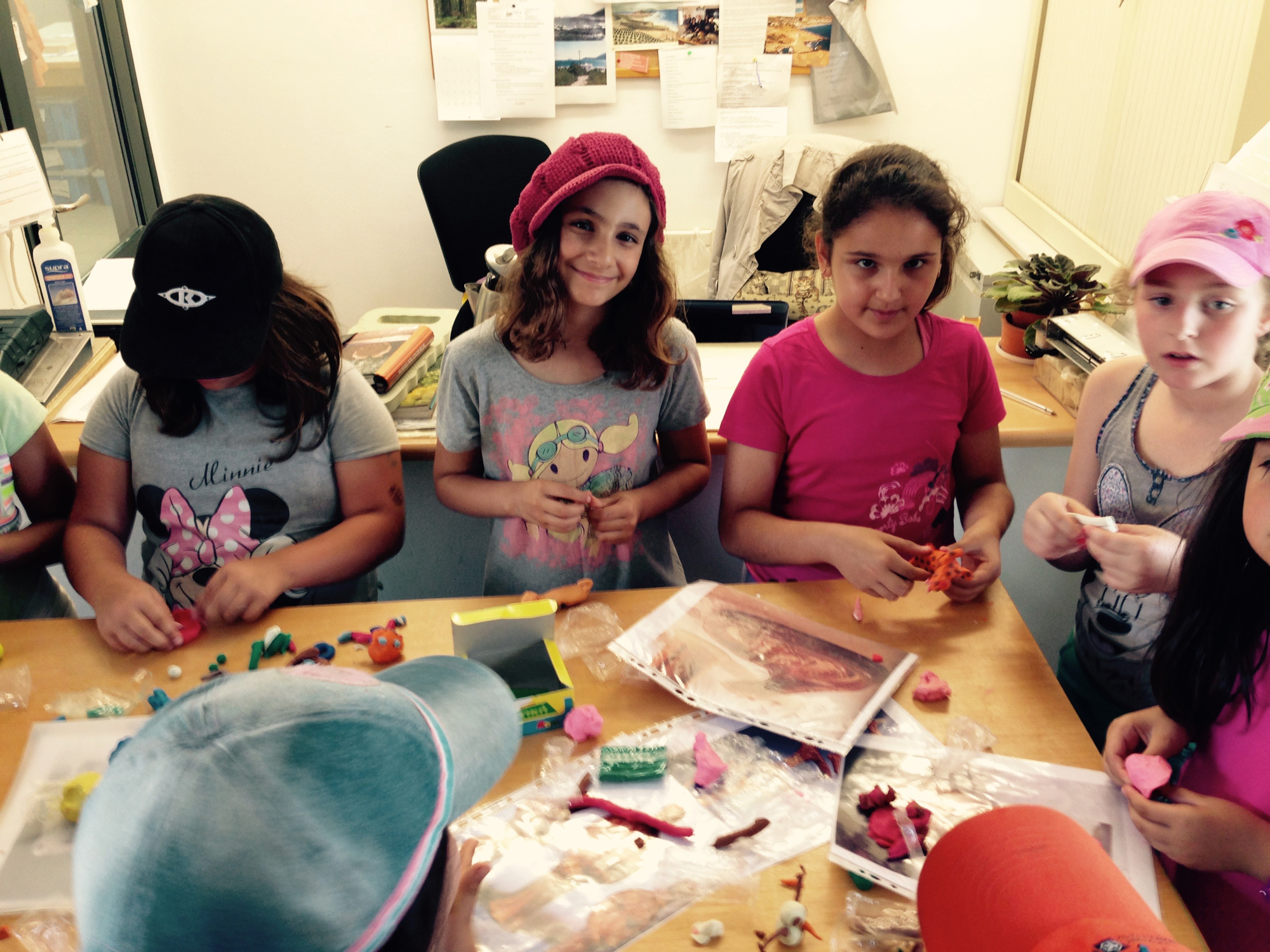
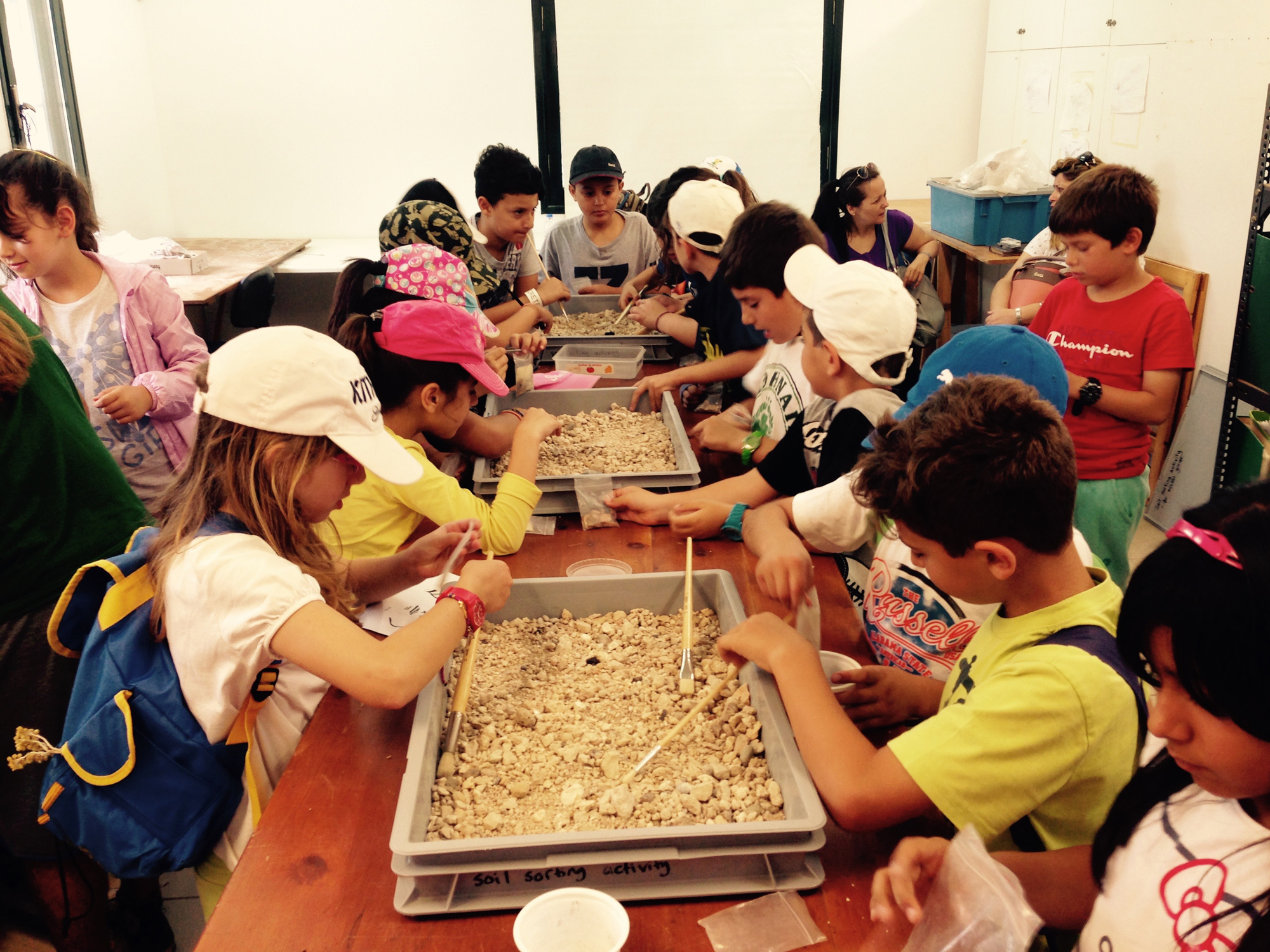
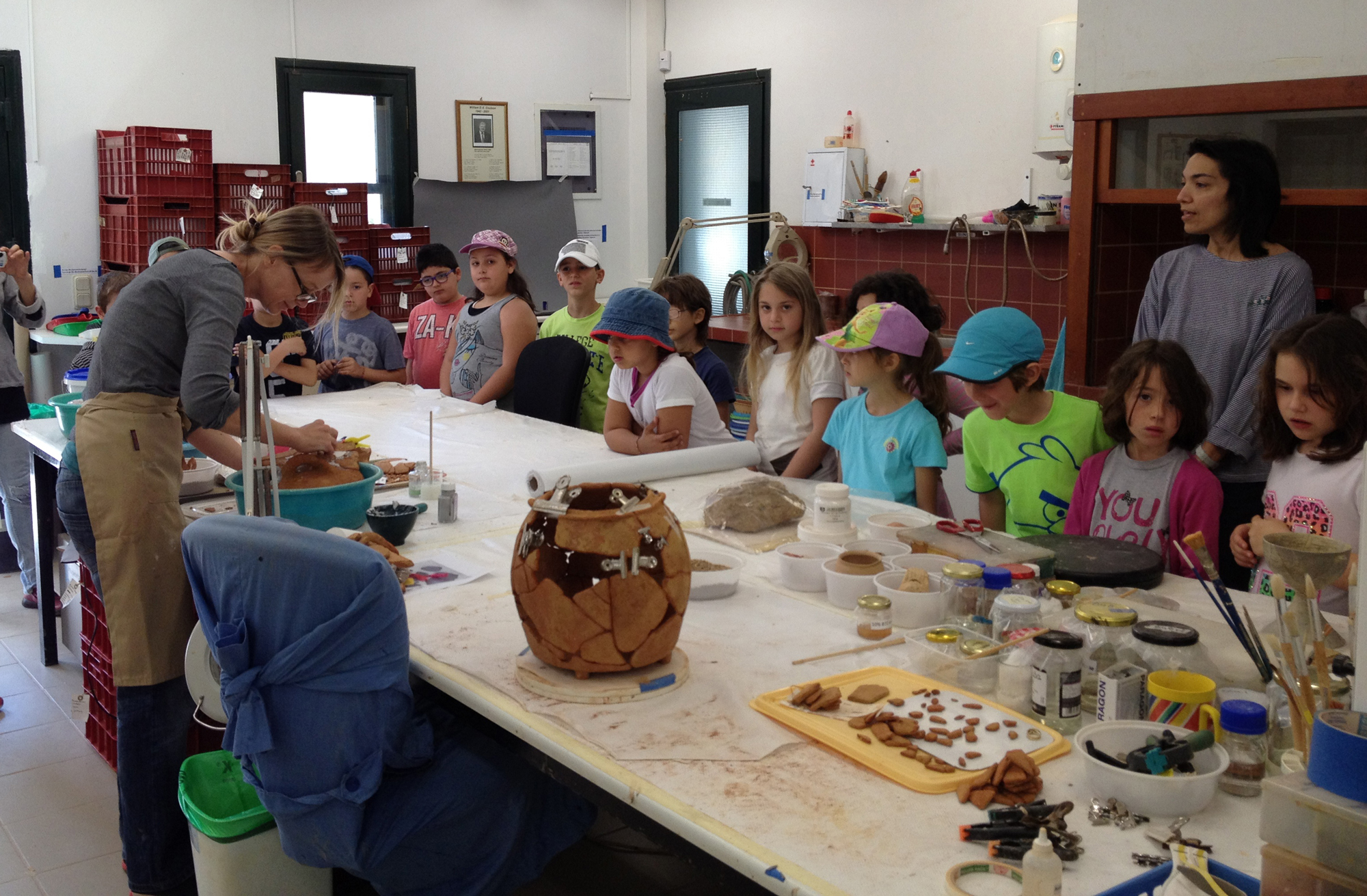
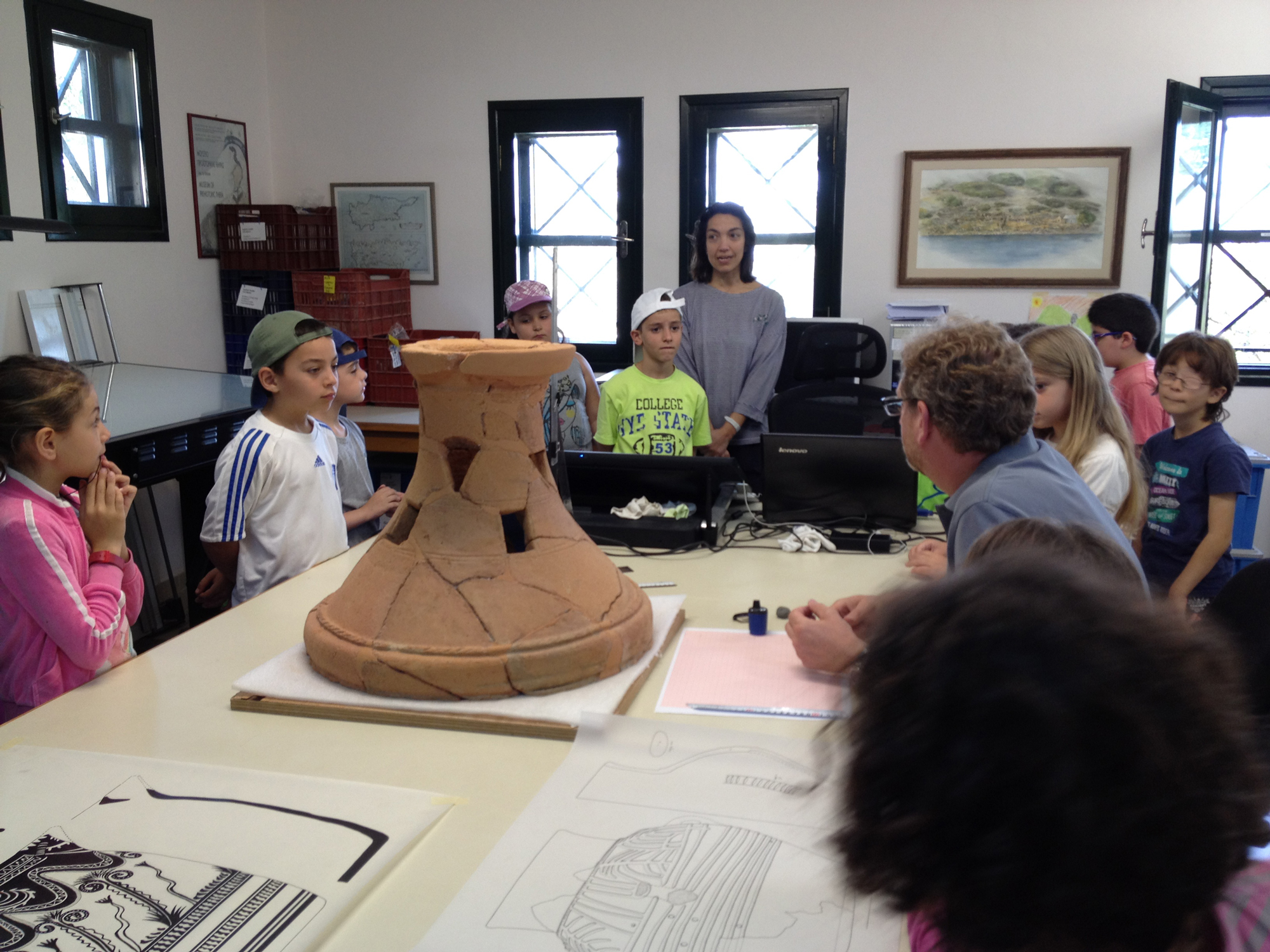
Signs for Archaeological Sites
In preparation for the multi-day conference and tour entitled “Crete 2000: A Celebration of 100 Years of American Archaeology on Crete” that was held in Athens and East Crete in July 2000, we designed and installed a series of informational signs at several archaeological sites in the area: Mochlos, Chrysokamino, Gournia, Kavousi Kastro and Vronda, and Vrokastro. The signs consist of text in Greek and English with images including plans, reconstructions, vessels, and other artifacts. Painted galvanized metal stands, set low in the landscape to blend into the archaeological environment, support the signs, which are constructed from aluminum and vinyl tape and sealed with a protective glaze. At Mochlos and Chrysokamino paths were also constructed to assist visitors’ access to the most important features of the site.


Local Museum Displays
After study and publication, a selection of the finds from the excavations and surveys based at the Study Center and the visiting projects that have received our technical support then go on display in one of three museums (or collections) in East Crete. Staff members of the Study Center have assisted our colleagues in the Lasithi Ephorate of the Greek Ministry of Culture in the selection of finds and the content of labels, which include English translations. Here we provide a brief overview of the material on display in Ierapetra and Siteia. The Hagios Nikolaos Museum is completing a major renovation and currently opens only on the weekend for limited hours.
Archaeological Collection of Ierapetra

A small but impressive collection of antiquities is on display in Ierapetra, a large town on the southeastern coast of Crete. The objects are installed in a historical building at the center of town, the Ottoman Commercial School which originally opened in 1899.
The cases along the northern wall of the first room contain many interesting artifacts from several sites in the area: Early Minoan (ca. 3000–2000 B.C.) artifacts from the excavations at Myrtos Phournou Koriphi by the British School of Archaeology, Bronze Age (ca. 3000–1050 B.C.) stone tools and stone vases from many sites in the region, ritual artifacts (including goddesses, plaques, a snake tube, and a bowl with two snakes in relief) from the Late Minoan IIIC (ca. 1200–1050 B.C.) shrine at Kavousi Vronda, Late Minoan IIIC–Early Iron Age (ca. 1200–700 B.C.) finds from the excavations at Kavousi Kastro and Vronda, and Archaic figurines (700–480 B.C.) and Classical pottery (480–330 B.C.) from rescue excavations in Ierapetra.
The cases along the southern side of the same space exhibit Minoan pottery from various sites, Late Minoan III (ca.1400–1050 B.C.) pottery from chamber tombs and Hellenistic and Roman (ca. 330 B.C. to the fourth century A.D.) pottery from rescue excavations in Ierapetra. A selection of medium-sized Bronze Age (ca. 3000–1050 B.C.) storage vessels can be found between the cases, while a series of terracotta sarcophagi line the central aisle.
The small second room is dedicated to burial practices in the Late Minoan IIIB (ca. 1300–1200 B.C.) and Late Geometric (ca. 800–700 B.C.) periods. The well-known painted larnax from Episkopi lines the northern side while a reconstruction of Grave 26 from Kavousi Vronda dated to the Late Geometric (ca. 800–700 B.C.) period lines the southern side. This reconstruction represents a collaboration between the excavator, Prof. Leslie Day and the staffs of both the Study Center and the Lasithi Ephorate of Antiquities of the Greek Ministry of Culture.
The third room is dedicated to Greek and Roman sculpture from Ierapetra. Highlights include individual portraits, a nereid riding a dolphin, and the famous image of Persephone as Isis.
Archaeological Museum of Siteia
Antiquities from sites in eastern Crete dating from the Final Neolithic period to the end of the Roman era (4000 B.C. to the end of the fourth century A.D.) are displayed in the Siteia Museum, which opened in 1984. The collection was completely remodeled in 2014 in order to highlight new archaeological discoveries from the past two decades. The staff of the Study Center contributed to both the selection of material for display and the content and English translations of the labels.
The museum consists of four rooms arranged around a central atrium. The first case contains the ivory figure of a male youth from Building 5 at Palaikastro, a Minoan town situated on the eastern coast of Crete. It is thought to represent a Minoan male deity and is widely recognized as one of the major discoveries in Minoan archaeology of the last 50 years.
The first room on the eastern side of the atrium displays finds from the Final Neolithic to the end of the Early Bronze Age (4000–2000 B.C.) Of particular interest are the grave goods from the Early Minoan IB (2900–2700 B.C.) cemetery at Hagia Photia, which has close cultural affinities with the material culture from the central Cycladic islands (e.g., Ano Kouphonisi) and the EM IB–MM II (2900–1800 B.C.) cemetery at Kephala Petras, which reveals the wealth, status, and wide-ranging contacts of this prosperous harbor town. Finds from the Middle Minoan II (1900–1800 B.C.) shipwreck recovered near the islet of Pseira, the hieroglyphic archive at Petras, and the Middle Minoan I–II (2000–1900 B.C.) peak sanctuaries in eastern Crete are presented in the next displays. Late Minoan I (1650–1450 B.C.) storage jars and wine presses from the palaces at Petras and Kato Zakros and houses at Papadiokampos are found along the windows. The adjacent cases exhibit cooking equipment, serving and drinking vessels, stone vases, and religious artifacts from Late Minoan I (1650–1450 B.C.) settlements in eastern Crete. Among the highlights is the ivory jewelry box from Mochlos which depicts the epiphany of the Minoan goddess.
The cases along the northern side of the atrium begin with finds from Minoan workshops, including tools for manufacturing perfume at Mochlos and Kato Zakros and for making pottery, metal goods, stone vases, and textiles at Mochlos, Zakros, and Papadiokampos. Next there is a unique exhibit of the physical evidence (ash and pumice) for the Theran volcanic eruption at Bronze Age sites in East Crete (Mochlos, Papadiokampos, and Choiromandres). Clay tablets inscribed with Linear A text from the palace of Kato Zakros are displayed nearby. The remaining exhibits highlight finds from the Late Minoan III (1400–1050 B.C.) cemeteries at Mochlos, Petras, and the wider Palaikastro region, including both drinking sets and jewelry placed in the graves and decorated coffins for the deceased.

The displays on the western side of the room take the visitor from the Early Iron Age (ca. 1050 B.C.) to the end of the Roman era in the fourth century A.D. Among the highlights are vases decorated with Geometric decoration, including a pyxis from Itanos depicting a combat scene that is thought to draw on the Homeric epics. There are also figurines from an Archaic (700–480 B.C.) ritual deposit found in Siteia, which reveal the orientalizing influence of eastern Mediterranean civilizations (e.g., Egypt) on Cretan art of the 7th and 6th centuries B.C. The following cases present finds from the Hellenistic (330–30 B.C.) houses at nearby Trypitos and the shrine of Kybele at Praisos. Finally, there is a display of material from the Roman settlement on the island of Kouphonisi (located off the southeastern coast of Crete), which drew its wealth from the production and trade of purple dye from murex shells.
